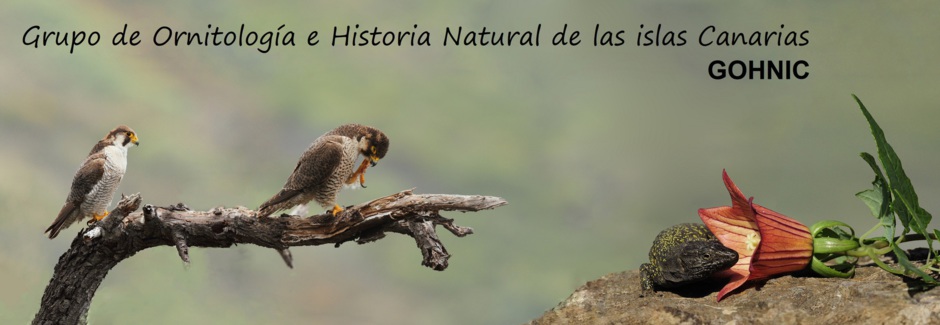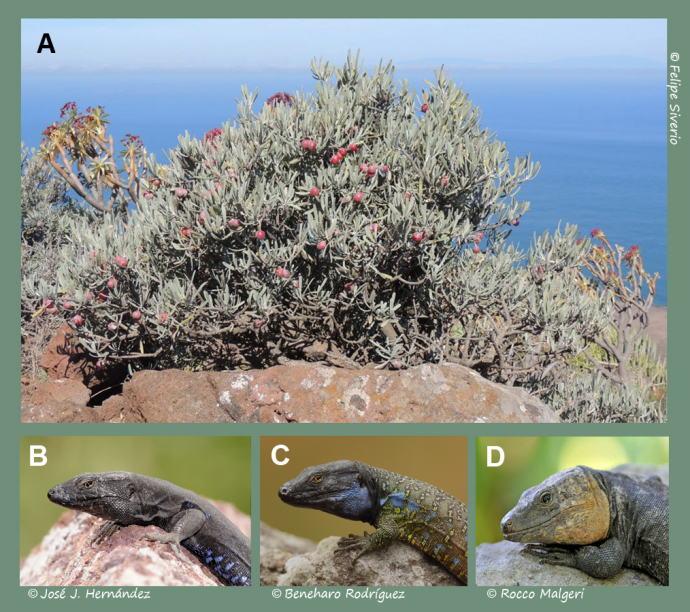
Under construction
New publications-Other entities
ORIJAMA AND GIANT CANARIAN LIZARDS
Pérez-Méndez, N., P. Jordano & A. Valido (2015). Downsized mutualisms: Consequences of seed dispersers’ body-size reduction for early plant recruitment. Perspectives in Plant Ecology, Evolution and Systematics 17: 151-159.
Downsized mutualisms: Consequences of seed dispersers’ body-size reduction for early plant recruitment. Human-driven body-size reduction of frugivorous vertebrates may entail the loss of seed dispersal functions, impairing plant regeneration. Consequently, the regeneration and dynamics of dependent plant populations may be severely altered. Here, we evaluated the consequences of body-size reduction of giant Canarian lizards (g. Gallotia, Lacertidae) on the recruitment of Orijama (Neochamaelea pulverulenta, Rutaceae), an endemic shrub relying exclusively on these frugivores for seed dispersal (figure 1).
Figure 1. Plant of Orijama (Neochamaelea pulverulenta) with ripe fruits (A). Fruits are only consumed by medium- and large-bodied endemic Canarian lizards (g. Gallotia). Reptiles’ body-size determines seed dispersal effectiveness of this plant species: (B) the Caesar’s Lizard (G. caesaris, La Gomera) it is a very low efficient disperser given its small body-size (maximum snout-vent length [hereafter, max. SVL] = 111 mm); (C) the Canary Lizard (G. galloti, Tenerife) is a sub-efficient seed disperser by its medium-sized (max. SVL= 145 mm); and (D) the efficient seed disperser, the Gran Canaria Giant Lizard (G. stehlini), with the largest body-size (max. SVL = 280 mm).
Our results show that the age structure patterns (quantitative component) did not differ, i.e. populations hosting small- to medium-bodied lizards exhibited a similar proportion of individuals belonging to different age classes (seedlings, saplings, juveniles and adults). However, we found significant reductions in effective recruitment rate, i.e. individuals growing outside the adult neighborhood, and reduced seedling vigour in populations hosting small- to medium-sized lizard species. Our results highlight the importance of conserving the full range of functional processes (qualitative and quantitative components) involved in mutualistic interactions crucial for the persistence of local regeneration and plant population dynamics. Néstor Pérez-Méndez (EBD-CSIC) and coll., May 2015.


